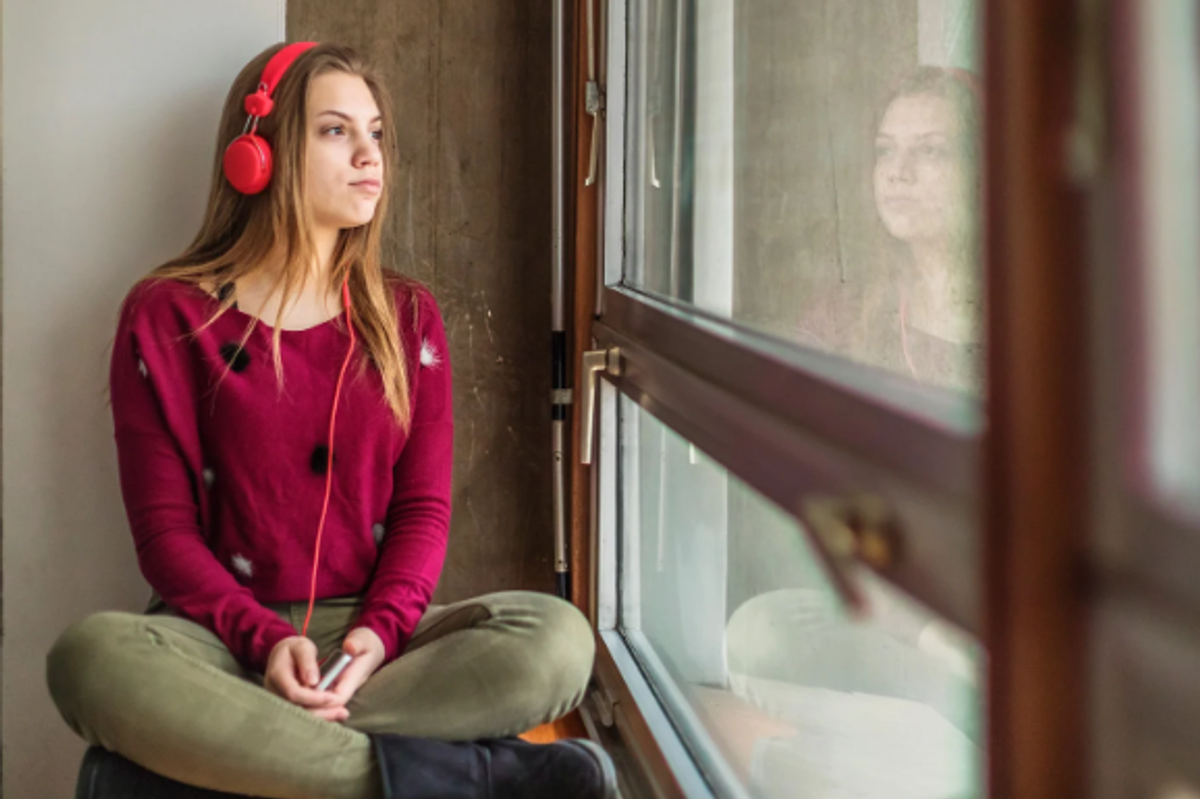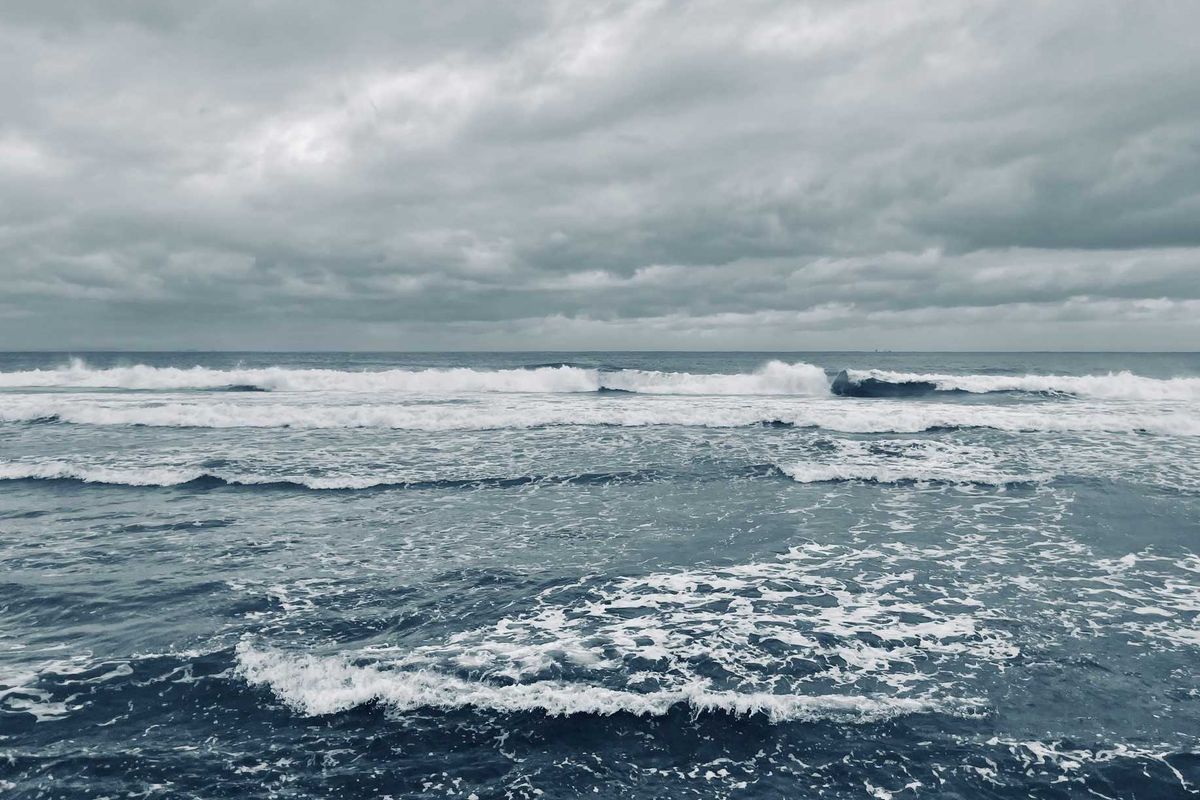We already know that whales and dolphins are pretty intelligent.
Photo from NOAA Photo Library/Flickr.
Bottlenose dolphins use sponges as protective face masks to probe the sea floor without damaging their snoots.
Orca whales have unique teamwork-reliant hunting strategies, like creating waves to wash seals off ice floes. And different orca whale populations seem to have their own distinct cultures too.
A new report suggests that those smarts might extend to emotions too.
In fact, scientists think that whales and dolphins might mourn and grieve just like humans do.
A recent paper in the Journal of Mammalogy documented this apparent mourning behavior in seven species of whale and dolphin, including spinner dolphins, Indo-Pacific bottlenose dolphins, orca whales, and sperm whales.
Spinner dolphins are named after their amazing, acrobatic spins. Photo from iStock.
Basically, scientists noticed that adult whales and dolphins tried to care for and nurture their dead young, a behavior that might represent a form of grieving.
"They are mourning," the paper's co-author Melissa Reggente told National Geographic. "They are in pain and stressed. They know something is wrong."
In one instance, in the Red Sea off Egypt, a small boat of biologists saw an adult Indo-Pacific bottlenose dolphin swimming, pushing at, and touching a recently deceased juvenile dolphin.
The biologists watched for a while before eventually fixing a rope around the juvenile and towing it ashore, where it was buried.
Even then, though, the adult dolphin followed them, swimming around and touching the juvenile until the water became too shallow for the dolphin to go on. But even after the juvenile had been buried, the adult stayed around the area.
We've seen what might be mourning behavior in other animals before.
An elephant at a zoo in Emmen, Netherlands, mourns the death of a friend. Olaf Kraak/AFP/Getty Images.
Elephants have been observed gently touching the bones of the dead. In his book "Elephant Destiny," elephant researcher Martin Meredith retold a story about an elephant family weeping and covering a recently dead matriarch with branches.
We've observed nurturing dead young in other animals too, like chimpanzees, but also in animals such as giraffes and manatees as well.
This new research is unfortunately pretty timely, considering that many species of whale and dolphin have a lot to grieve about lately.
Overzealous whaling in the 17th-20th centuries drove many whale species to the brink of extinction. Today, whaling is rare. But pollution, industrialization, and climate change still threaten these kinds of sea creatures.
Plus, eight of the 13 big whale species are currently endangered or critically endangered, including blue whales and fin whales. Many others are threatened or vulnerable.
Ascribing human emotions to animals is tricky, but we already know they're complex, emotional creatures.
Photo from iStock.
Though I'd wager that nearly all pet owners can name times when their animals were anxious or joyful or mourning, scientists are usually hesitant to pin human emotions on animals.
This is mostly because our own human emotions are so tied into our culture that it'd be a little presumptuous to think animal emotions would look or feel exactly like ours.
But it would probably be hard to find someone arguing that big, social animals like whales don't feel something.
This report adds weight to the idea that grief is a common and widespread behavior in long-lived, social species.
The same parts of our brains that process emotions are shared by a wide range of animals.
And if animals really do feel emotions, maybe we need to think more about how we're treating the other species on the planet too.



 Millennial mom struggles to organize her son's room.Image via Canva/fotostorm
Millennial mom struggles to organize her son's room.Image via Canva/fotostorm Boomer grandparents have a video call with grandkids.Image via Canva/Tima Miroshnichenko
Boomer grandparents have a video call with grandkids.Image via Canva/Tima Miroshnichenko


 Information from the NICABM website regarding the "Window of Tolerance."Photo Credit: The National Institute for the Clinical Application of Behavioral Medicine
Information from the NICABM website regarding the "Window of Tolerance."Photo Credit: The National Institute for the Clinical Application of Behavioral Medicine  Waves cycle in the ocean. Photo by
Waves cycle in the ocean. Photo by
Gen Xers and Millennials share 17 of the strangest things their Baby Boomer parents do
"My mom writes her emails in MS Word, then attaches the Word document to the email."
A Baby Boomer couple.
Generational fights have raged since the dawn of time, and a recent spat between Millennials and Baby Boomers is no exception. Baby Boomers, who raised Millennials, accuse the younger generation of being entitled and irresponsible with money. At the same time, Millennials accuse Boomers of having it easier economically while making it harder for those who came after them.
Where is Gen X in the battle? Probably off in the corner somewhere, saying, "Whatever." Aside from the generational sniping, there are some things the older generation does that are just plain baffling to younger people. Whether it's outdated worldviews, a refusal to adapt to modern technology, or a lack of self-awareness, Baby Boomers can do some strange things.
To help the younger folks get over their frustrations with parents from the "Me Generation," a Redditor asked: "What is the most Boomer thing your parents still do?" The stories were pretty funny and relatable, showing that almost everyone with parents over 60 is dealing with the same thing.
Here are 17 of the "strangest" things people's Baby Boomer parents do:
1. Phones on full blast
"Play iPhone slot machine games at full volume in the doctor’s office."
"My dad pretty much exclusively has his phone on speaker, and just walks around in public talking with it at max volume (and talking really loud himself). I’m like 'Dad, the entire supermarket doesn’t want to listen to you, and Uncle Jim complains about how often you have to pee.'"
2. Still using checkbooks
"My mom balances her checkbook every week. They still have a landline."
"And she probably has way more money than you will until she dies!"
3. Email issues
"My mom writes her emails in MS Word, then attaches the Word document to the email."
"Like the email is just the virtual envelope for the digital letter."
4. Restaurant jokes
"All those little restaurant comments.
'Wow, they'll let anyone in here!' when seeing a friend at said restaurant.
'Thanks for having us, not everyone will' to the waiter at the end of the meal.
'As you can see, it was terrible' when the staff takes away the clearly entirely eaten plate.
'You're going to have me floating away in a minute' when more water is put into their glass"
5. Always have to mention race
"Constantly mentioning the race or ethnicity of everyone she mentions. Never with any negative connotation or comment, but usually, there is no reason for it to be relevant to the conversation."
"My Jewish mother will always whisper the word 'black' in case anyone hears her: 'So the nice black man at the hardware store helped me find the right garden hose.'"
6. Googling their Google
"Typing Google on Google before they Google the thing they’re looking for."
"In the Google search bar, they type Google? Lol."
7. Getting a job is a cinch
"Believing you can walk into a business and hand in a resume. If you have a college degree in any field, they'll hire you."
"Just physically hand over your resume to HR or the hiring manager. You'll make a mark and get hired!! Call the office and ask to speak to HR/Hiring Manager."
Any Millennial who argued with their Boomer parents about how hard it is to land a good job should feel vindicated by a 2022 study, which found that most older Millennials didn't secure good jobs until their early 30s, while most Boomers did so in their 20s. "To secure a good job, young adults need to acquire more education and high-quality work experience than was necessary for previous generations," the researchers wrote.
8. Why are they together?
"Stay married forever while they behave like neither one of them can stand each other."
"I'm on the other side of that. After my mom passed, my dad now acts like their marriage was picture perfect and they were the love of each other's lives, even though they couldn't stand each other for at the very least 40 of the 54 years they were married."
9. Collectables or hoarding?
"Think their 'collectibles' are truly valuable."
"My mom insists her Hummels are going to put my kids through college!"
"Mine are the Thomas Kincade paintings. She has a Victorian glass piece that might actually be worth something, but those damn paintings are the real investment."
10. Can you grab the mail?
"Ask me to bring in the mail when they go away for more than 24 hours."
"My parents think everybody is standing at the door waiting for the mailman every day, and don’t believe me when I tell them that some people go days without checking their mail. They think everybody is waiting for the mailman every day because 'somebody might send them a check.' Like, really?"
11. Zero responsibility
"'Well, I guess I was just a bad father.' Yeah. That attitude of anti-responsibility is exactly why 3 out of 4 of your children don't talk to you."
"Ha! Have the same dad, do we?"
12. Comment on people's appearance
"Comment on EVERYBODY’s body/appearance/weight. The first thing my dad does after not seeing me for a year is poke me in the gut and tell me how fat I am."
13. Boomer panic is real
"Literally throwing their hands up in a panic when they don't understand something. Where did they learn that?"
"Or just saying 'well, I don't know', especially when that comes right after you explaining it and showing them how to do something, with them nodding along and asking relevant questions all the way through."
In a video by YourTango, editor Brian Sundholm tried to explain Boomer panic in an empathetic way: "Most of us nowadays know the importance of recognizing and feeling our emotions." Sundholm then quoted therapist Mitzi Bachman, who explained that when people struggle to express their emotions, it can result in an "unhinged" reaction.
14. Annoying Facebook posts
"Post nonsensical rants on Facebook for other boomers to like, share, and comment. Often these rants are political, but not always. Basically cringe-fest."
"Most people won't do it, but share this post if you believe in god and freedom."
"I do NOT give Facebook permission to use my photos and personal information!"
15. Dinner pushers
"While we're eating breakfast. What do you want to do for supper?"
"Can't we enjoy this meal without worrying about the next?"
16. They print everything
"My boomer in-laws print EVERYTHING! The number of times I have said, 'quit wasting ink, email it to me, or text me the link. Or just text me the schedule, don't print it out.' GPS on their phones? Nope...print a map."
"Boomers and their paper man. My dad has finally started using the internet, but he still prints everything he likes. Like he'll see a boat listing on Craigslist and print the entire page, including a massive color photo of it, and he's definitely not going to be buying it either. He's got a stack of papers that is the internet that sits by his recliner. He just sits there with Fox News on (though it's usually muted for some reason, that's a plus) and looks at his papers."
17. Flirting with servers
"My dad is 77 still flirts with the young waitresses. It's f**king weird for everyone."
"He thinks he is in cute old man territory, but he is not."